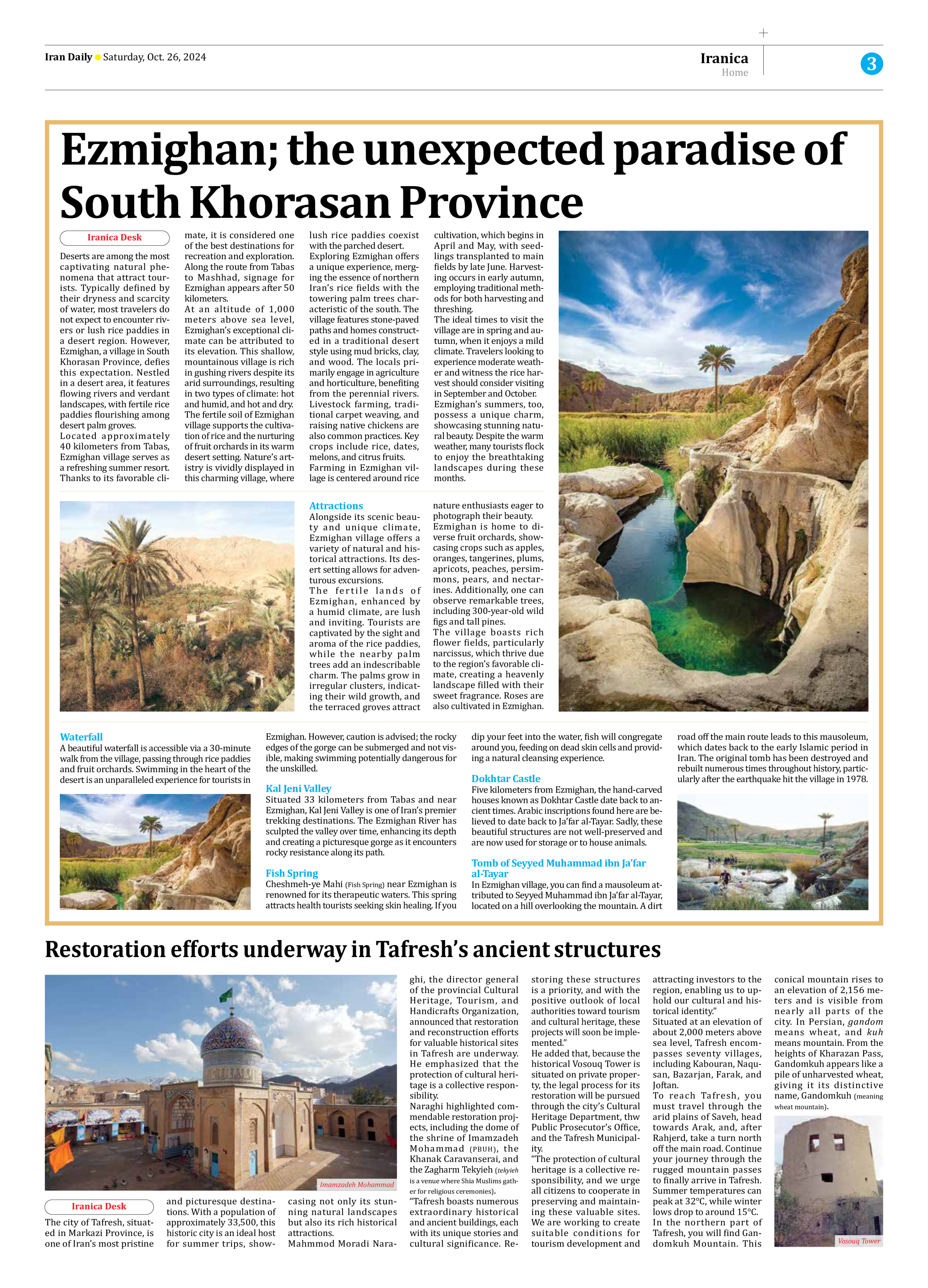
Restoration efforts underway in Tafresh’s ancient structures
The city of Tafresh, situated in Markazi Province, is one of Iran’s most pristine and picturesque destinations. With a population of approximately 33,500, this historic city is an ideal host for summer trips, showcasing not only its stunning natural landscapes but also its rich historical attractions.
Mahmmod Moradi Naraghi, the director general of the provincial Cultural Heritage, Tourism, and Handicrafts Organization, announced that restoration and reconstruction efforts for valuable historical sites in Tafresh are underway. He emphasized that the protection of cultural heritage is a collective responsibility.
Naraghi highlighted commendable restoration projects, including the dome of the shrine of Imamzadeh Mohammad (PBUH), the Khanak Caravanserai, and the Zagharm Tekyieh (tekyieh is a venue where Shia Muslims gather for religious ceremonies).
“Tafresh boasts numerous extraordinary historical and ancient buildings, each with its unique stories and cultural significance. Restoring these structures is a priority, and with the positive outlook of local authorities toward tourism and cultural heritage, these projects will soon be implemented.”
He added that, because the historical Vosouq Tower is situated on private property, the legal process for its restoration will be pursued through the city’s Cultural Heritage Department, thw Public Prosecutor’s Office, and the Tafresh Municipality.
“The protection of cultural heritage is a collective responsibility, and we urge all citizens to cooperate in preserving and maintaining these valuable sites. We are working to create suitable conditions for tourism development and attracting investors to the region, enabling us to uphold our cultural and historical identity.”
Situated at an elevation of about 2,000 meters above sea level, Tafresh encompasses seventy villages, including Kabouran, Naqusan, Bazarjan, Farak, and Joftan.
To reach Tafresh, you must travel through the arid plains of Saveh, head towards Arak, and, after Rahjerd, take a turn north off the main road. Continue your journey through the rugged mountain passes to finally arrive in Tafresh. Summer temperatures can peak at 32°C, while winter lows drop to around 15°C.
In the northern part of Tafresh, you will find Gandomkuh Mountain. This conical mountain rises to an elevation of 2,156 meters and is visible from nearly all parts of the city. In Persian, gandom means wheat, and kuh means mountain. From the heights of Kharazan Pass, Gandomkuh appears like a pile of unharvested wheat, giving it its distinctive name, Gandomkuh (meaning wheat mountain).







